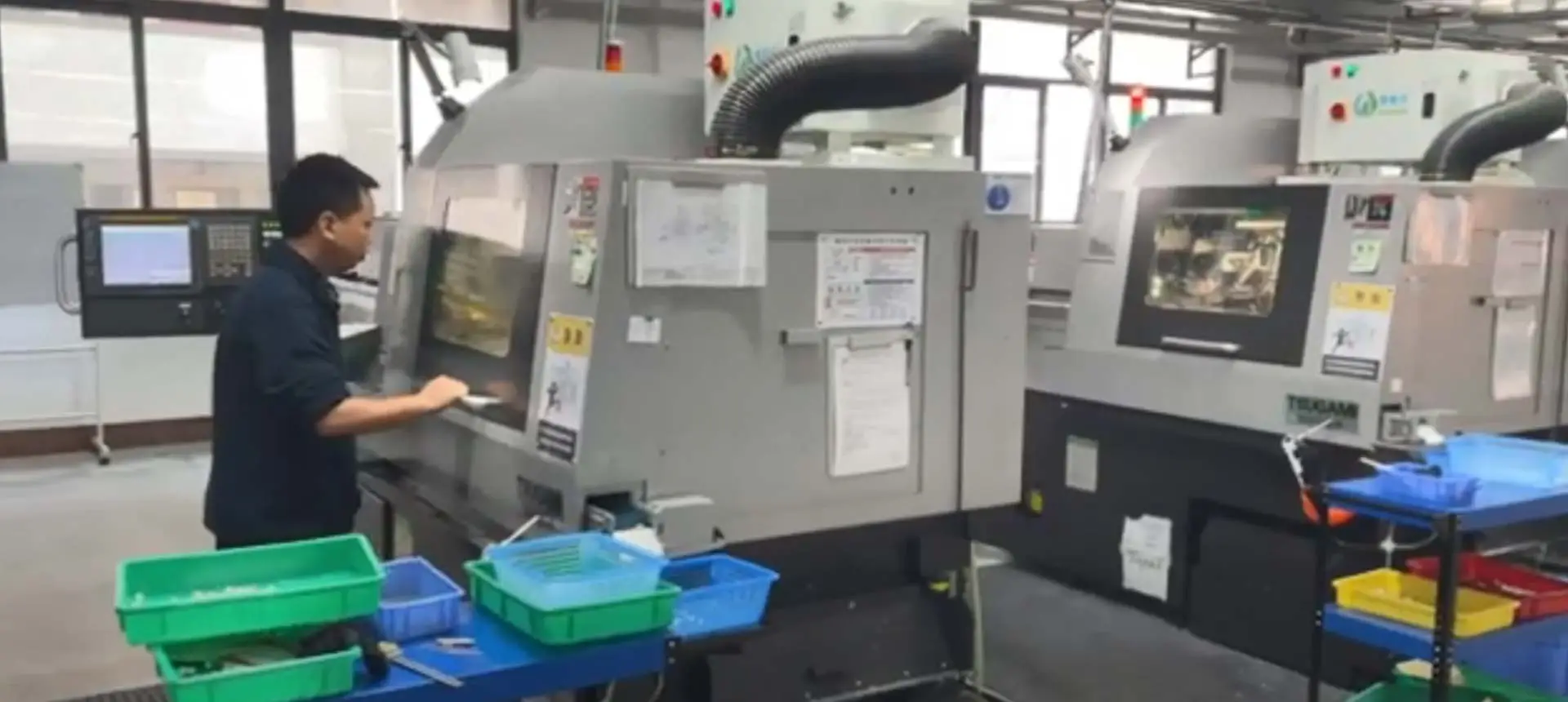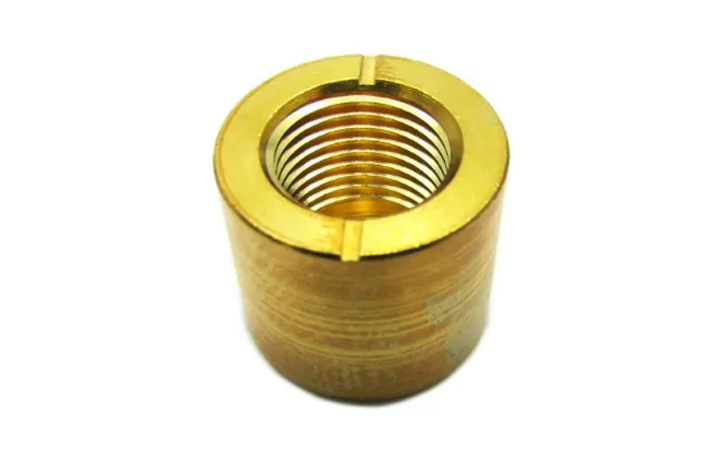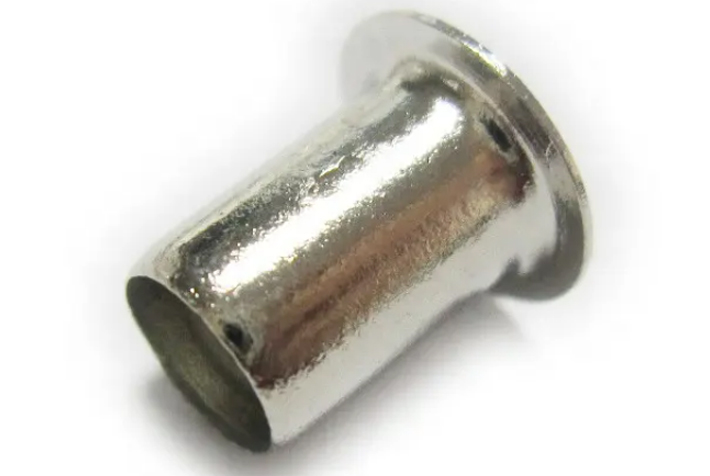
การตรวจสอบวัสดุ: กระบวนการควบคุมคุณภาพเริ่มต้นด้วยการตรวจสอบวัตถุดิบที่เข้ามา วัสดุที่ใช้สำหรับบูช/แขนเสื้อควรเป็นไปตามมาตรฐานและข้อกำหนดที่ระบุ วิธีการทดสอบวัสดุอาจรวมถึงการวิเคราะห์องค์ประกอบทางเคมีการทดสอบความแข็งและการตรวจสอบมิติ
ความแม่นยำของมิติ: บูช/แขนเสื้อต้องมีขนาดที่แม่นยำเพื่อให้แน่ใจว่าพอดีและใช้งานได้ดี มาตรการการควบคุมคุณภาพเกี่ยวข้องกับการตรวจสอบมิติโดยใช้เครื่องมือและอุปกรณ์ที่สอบเทียบเช่นเครื่องวัดเส้นผ่าศูนย์กลางไมโครมิเตอร์และมาตรวัดเพื่อตรวจสอบเส้นผ่าศูนย์กลางภายในและภายนอกความยาวและความหนาของผนัง
คุณภาพพื้นผิว: พื้นผิวของบูช/ปลอกแขนเป็นสิ่งสำคัญสำหรับการทำงานที่ราบรื่นและลดแรงเสียดทาน การตรวจสอบการควบคุมคุณภาพเกี่ยวข้องกับการตรวจสอบพื้นผิวสำหรับข้อบกพร่องเช่นครีบรอยขีดข่วนหรือความผิดปกติ การวัดความขรุขระของพื้นผิวอาจทำได้โดยใช้เครื่องมือเช่น profilometers.
การตรวจสอบความอดทน: bushings/sleeves มีความคลาดเคลื่อนเฉพาะที่กำหนดรูปแบบที่ยอมรับได้ในมิติข้อมูล ขั้นตอนการควบคุมคุณภาพเกี่ยวข้องกับการตรวจสอบส่วนประกอบที่ผลิตกับความคลาดเคลื่อนเหล่านี้เพื่อให้แน่ใจว่าพวกเขาตกอยู่ภายในขีดจำกัดที่ระบุ
คุณสมบัติทางกล: ขึ้นอยู่กับความต้องการในการใช้งานคุณสมบัติทางกลบางอย่างของบูช/แขนเสื้อเช่นความแข็งความต้านทานแรงดึงและการยืดตัวจำเป็นต้องได้รับการประเมิน คุณสมบัติเหล่านี้สามารถประเมินได้ผ่านวิธีการทดสอบที่ได้มาตรฐานรวมถึงการทดสอบความแข็ง (เช่น Rockwell หรือ brinell) และการทดสอบแรงดึง
วัสดุทำจากวัสดุ | เหล็กสแตนเลสทองเหลืองทองแดงเหล็กชุบสังกะสีไทเทเนียมอลูมิเนียมฯลฯ |
การรักษาพื้นผิว | สังกะสี/นิกเกิล/ดีบุก/AG-plated/au-Plated ฯลฯ |
ประเภทประเภท | ชิ้นส่วนที่ไม่ได้มาตรฐานความแม่นยำสูง (บริการ OEM) |
กระบวนการกระบวนการ | ปั๊ม/เจาะ/กด, เครื่องจักรกลซีเอ็นซี/กลึง/กัด, วาดลึกและกระบวนการอื่นๆ |
ใบรับรองการรับรอง | IATF16949 2016; ฉัน SO9001 2015; ISO14001:2015;RoHS & Reach ฯลฯ |
การใช้ใช้ | เทอร์โมสตัทยานยนต์/รถยนต์สวิตช์เครื่องทำความร้อนไฟฟ้าการบินและอวกาศพลังงานใหม่ฯลฯ |
บูชหรือที่เรียกว่าปลอกแขนเป็นส่วนประกอบทรงกระบอกที่ใช้ในการใช้งานต่างๆเพื่อรองรับลดแรงเสียดทานและดูดซับแรงกระแทกหรือการสั่นสะเทือน คุณลักษณะเฉพาะของผลิตภัณฑ์ของบูช/ปลอกแขนอาจแตกต่างกันไปตามการใช้งานที่ตั้งใจไว้และวัสดุที่ทำมาจาก
ความต้านทานการสึกหรอ:บูช/แขนเสื้ออาจมีคุณสมบัติเฉพาะเพื่อเพิ่มความต้านทานการสึกหรอโดยเฉพาะอย่างยิ่งในการใช้งานที่มีโหลดสูงหรือความเร็วสูง คุณสมบัติเหล่านี้สามารถรวมถึงการเคลือบพื้นผิวพิเศษการรักษาความร้อนหรือการใช้วัสดุที่มีคุณสมบัติทนต่อการสึกหรอโดยธรรมชาติ
การดูดซับแรงกระแทกและแรงกระแทก:บูช/แขนเสื้อบางรุ่นได้รับการออกแบบมาเพื่อดูดซับแรงกระแทกหรือการสั่นสะเทือนช่วยลดการส่งผ่านแรงกระแทก พวกเขาอาจมีคุณสมบัติเช่นความยืดหยุ่นสูงความยืดหยุ่นหรือความสามารถในการเปลี่ยนรูปภายใต้โหลดให้ลักษณะการทำให้หมาดๆ
ความต้านทานการกัดกร่อน:บูช/แขนเสื้ออาจต้องการคุณสมบัติทนต่อการกัดกร่อนทั้งนี้ขึ้นอยู่กับการใช้งานและสภาพแวดล้อมการทำงาน สิ่งนี้มีความสำคัญอย่างยิ่งเมื่อสัมผัสกับความชื้นสารเคมีหรืออุณหภูมิที่สูงเกินไป การเลือกวัสดุที่เหมาะสมหรือการใช้สารเคลือบป้องกันสามารถเพิ่มความต้านทานการกัดกร่อนของบูชได้
คุณสมบัติเฉพาะแอปพลิเคชัน:บูช/แขนเสื้อบางรุ่นอาจมีคุณสมบัติเพิ่มเติมเฉพาะสำหรับการใช้งานบางอย่าง ตัวอย่างเช่นบูชหน้าแปลนมีหน้าแปลนในตัวที่ให้ความมั่นคงหรือจุดยึดเพิ่มเติม
เมื่อเลือก bushings/sleeves ให้พิจารณาความต้องการเฉพาะของการใช้งานของคุณเช่นความสามารถในการรับน้ำหนักความเร็วสภาพการทำงานและปัจจัยด้านสิ่งแวดล้อม การทำความเข้าใจคุณสมบัติของผลิตภัณฑ์และความเหมาะสมสำหรับการใช้งานที่ตั้งใจไว้ของคุณจะช่วยให้มั่นใจได้ถึงประสิทธิภาพและอายุยืนที่ดีที่สุด
Bushings เป็นส่วนประกอบทรงกระบอกที่เรียบง่ายที่ออกแบบมาเพื่อลดแรงเสียดทานระหว่างเพลาและโครงสร้างภายนอกให้การสนับสนุนและคำแนะนำ พบได้ทั่วไปในเฟอร์นิเจอร์ระบบกันสะเทือนรถยนต์ฯลฯได้รับการออกแบบมาเพื่อความเรียบง่ายและสามารถเป็นร่องหล่อลื่นในตัวที่เป็นของแข็งหรือมีคุณสมบัติเพื่อลดแรงเสียดทานและเพิ่มความทนทาน

แบริ่งในทางกลับกันเป็นส่วนประกอบทางกลที่ซับซ้อนมากขึ้นด้วยองค์ประกอบการกลิ้งเช่นลูกบอลหรือลูกกลิ้ง พวกเขาลดแรงเสียดทานให้ความสามารถในการรับน้ำหนักที่มากขึ้นและให้การสนับสนุนที่มีความแม่นยำสูง ใช้กันอย่างแพร่หลายในเครื่องยนต์มอเตอร์เพลาล้อฯลฯแบริ่งมาในการออกแบบต่างๆเพื่อตอบสนองความต้องการของการใช้งานความเร็วสูงและโหลดสูง ในฐานะผู้จัดจำหน่ายฮาร์ดแวร์ HHC ทุ่มเทให้กับการส่งมอบบูชและแบริ่งที่มีคุณภาพสูงเพื่อตอบสนองความต้องการในการออกแบบและการใช้งานที่หลากหลายในอุตสาหกรรมต่างๆที่เอื้อต่อการพัฒนาในสาขาต่างๆ
บูชเป็นส่วนประกอบสำคัญที่ช่วยลดแรงเสียดทานระหว่างเพลาและโครงสร้างภายนอกและประสิทธิภาพจะถูกกำหนดโดยวัสดุที่เลือก นี่คือคำแนะนำเกี่ยวกับประเภทของวัสดุบูชและเทคนิคการประมวลผลที่เหมาะสมสำหรับแต่ละ:

ทองเหลือง:
ลักษณะ: EXHIbits การนำความร้อนที่ดีและความต้านทานการกัดกร่อน
เทคนิคการประมวลผล: ทองเหลืองได้รับการประมวลผลโดยทั่วไปโดยใช้เทคนิคทางกลเช่นการกลึงการกัดและการเจาะเพื่อให้ได้รูปทรงและขนาดที่ต้องการ
สีบรอนซ์:
ลักษณะ: มีความแข็งสูงและทนต่อการสึกหรอ
เทคนิคการประมวลผล: บรอนซ์มักจะถูกประมวลผลผ่านการหล่อที่แม่นยำการอัดรีดแบบเย็นหรือเทคนิคอื่นๆในการผลิตบูชรูปทรงที่ซับซ้อน
โพลิเมอร์:
ลักษณะ: เป็นที่รู้จักสำหรับการหล่อลื่นด้วยตนเองและความต้านทานการกัดกร่อน
เทคนิคการประมวลผล: บูชโพลีเมอร์มักผลิตขึ้นโดยใช้การฉีดขึ้นรูปซึ่งพอลิเมอร์หลอมเหลวถูกฉีดเข้าไปในแม่พิมพ์เพื่อสร้างรูปร่างที่ต้องการ

สารเคลือบโลหะ:
ลักษณะ: ให้ความต้านทานการสึกหรอและความแข็งแรงที่เหนือกว่า
เทคนิคการประมวลผล: บูชเหล็กมักจะเคลือบโดยใช้กระบวนการต่างๆเช่นการชุบสังกะสีแบบจุ่มร้อนหรือการชุบด้วยไฟฟ้าเพื่อให้เคลือบโลหะป้องกันบนพื้นผิว


